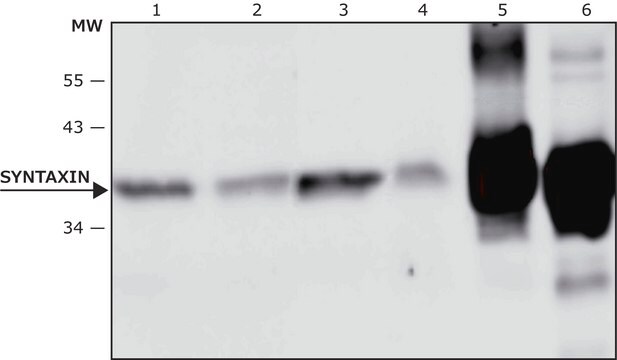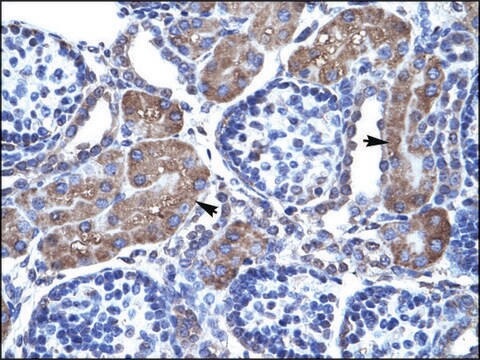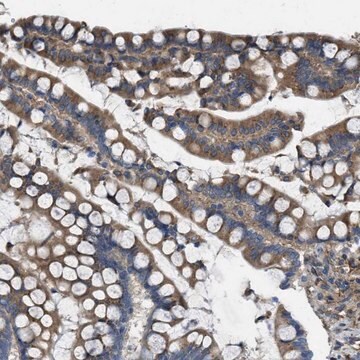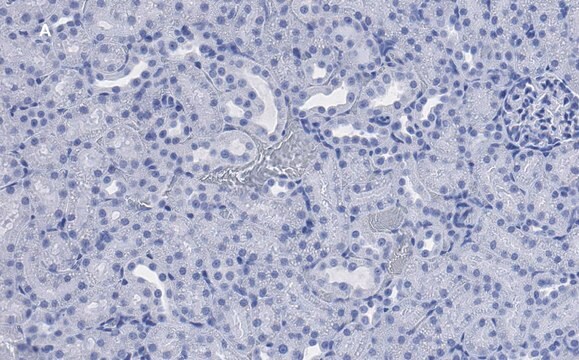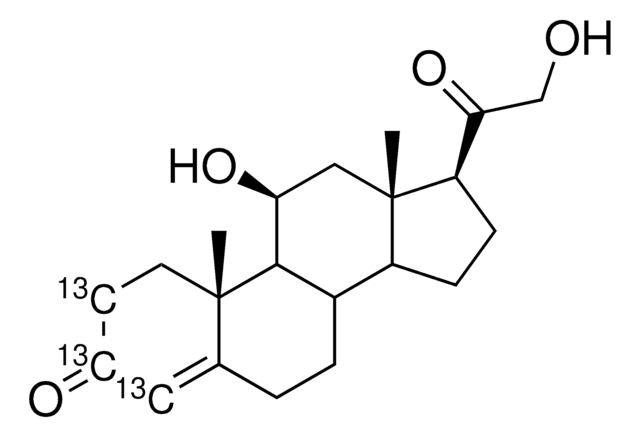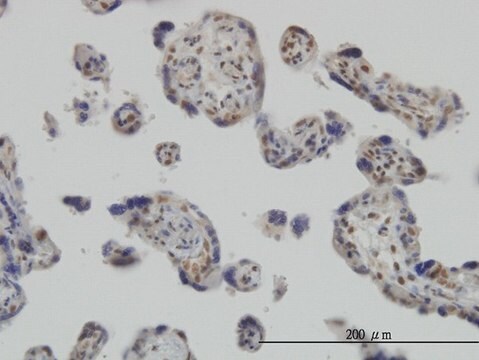推荐产品
生物源
rabbit
品質等級
抗體表格
affinity purified immunoglobulin
抗體產品種類
primary antibodies
無性繁殖
polyclonal
純化經由
affinity chromatography
物種活性
rat
製造商/商標名
Chemicon®
技術
western blot: suitable
NCBI登錄號
UniProt登錄號
運輸包裝
wet ice
目標翻譯後修改
unmodified
基因資訊
human ... STX4(6810)
特異性
Recognizes Syntaxin 4.
免疫原
Highly purified corresponding to residues 2-23 of rat or mouse Syntaxin 4 (Accession Q08850).
應用
Research Category
Neuroscience
Neuroscience
Research Sub Category
Synapse & Synaptic Biology
Synapse & Synaptic Biology
This Anti-Syntaxin 4 Antibody is validated for use in WB for the detection of Syntaxin 4.
Western blotting: 0.5-1.0 μg/mL (1:200-1:500) Dilutions should be made using a carrier protein such as BSA (1-3%).
Optimal working dilutions must be determined by the end user.
Optimal working dilutions must be determined by the end user.
外觀
Affinity purified immunoglobulin. Lyophilized from PBS, pH 7.4, containing 1% BSA and 0.025% sodium azide. Reconstitute with 200 μL of sterile distilled water. Centrifuge antibody preparation before use (10,000 x g for 5 min).
儲存和穩定性
Maintain lyophilized material at -20°C for up to 6 months. After reconstitution maintain at -20°C in undiluted aliquots for up to 6 months. Avoid repeated freeze/thaw cycles.
分析報告
Control
CONTROL ANTIGEN: Included free of charge with the antibody is 40 μg of control antigen (lyophilized powder). Reconstitute with 100 μL of sterile distilled water. For negative control, preincubate 1 μg of purified peptide with 1 μg of antibody for one hour at room temperature. Optimal concentrations must be determined by the end user.
CONTROL ANTIGEN: Included free of charge with the antibody is 40 μg of control antigen (lyophilized powder). Reconstitute with 100 μL of sterile distilled water. For negative control, preincubate 1 μg of purified peptide with 1 μg of antibody for one hour at room temperature. Optimal concentrations must be determined by the end user.
其他說明
Concentration: Please refer to the Certificate of Analysis for the lot-specific concentration.
法律資訊
CHEMICON is a registered trademark of Merck KGaA, Darmstadt, Germany
免責聲明
Unless otherwise stated in our catalog or other company documentation accompanying the product(s), our products are intended for research use only and are not to be used for any other purpose, which includes but is not limited to, unauthorized commercial uses, in vitro diagnostic uses, ex vivo or in vivo therapeutic uses or any type of consumption or application to humans or animals.
未找到合适的产品?
试试我们的产品选型工具.
Arlene A Hirano et al.
Visual neuroscience, 24(4), 489-502 (2007-07-21)
Horizontal cells mediate inhibitory feed-forward and feedback communication in the outer retina; however, mechanisms that underlie transmitter release from mammalian horizontal cells are poorly understood. Toward determining whether the molecular machinery for exocytosis is present in horizontal cells, we investigated
Eunjin Oh et al.
Diabetes, 70(12), 2837-2849 (2021-09-25)
Syntaxin 4 (STX4), a plasma membrane-localized SNARE protein, regulates human islet β-cell insulin secretion and preservation of β-cell mass. We found that human type 1 diabetes (T1D) and NOD mouse islets show reduced β-cell STX4 expression, consistent with decreased STX4
Christian Puller et al.
PloS one, 9(2), e88963-e88963 (2014-03-04)
The functional roles and synaptic features of horizontal cells in the mammalian retina are still controversial. Evidence exists for feedback signaling from horizontal cells to cones and feed-forward signaling from horizontal cells to bipolar cells, but the details of the
M Joseph Phillips et al.
The Journal of comparative neurology, 518(11), 2071-2089 (2010-04-16)
The Pde6b(rd10) (rd10) mouse has a moderate rate of photoreceptor degeneration and serves as a valuable model for human autosomal recessive retinitis pigmentosa (RP). We evaluated the progression of neuronal remodeling of second- and third-order retinal cells and their synaptic
我们的科学家团队拥有各种研究领域经验,包括生命科学、材料科学、化学合成、色谱、分析及许多其他领域.
联系技术服务部门